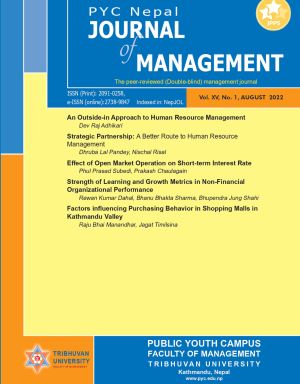Effect of Open Market Operation on Short-Terms Interest
DOI:
https://doi.org/10.3126/pycnjm.v15i1.56351Keywords:
Open market operations, Repo, Reverse repo, Short-term interest rates, Monetary policyAbstract
This study attempts to analyze the effect of repos and reverse repo under open market operations on interbank rates over the time span of 19 years from August 2002 to August 2021. Interbank transaction amount and Treasury bill rate are used as independent variables. Whereas, net liquidity, credit to core capital plus deposit (CCD) ratio, and exchange rate are used as the control variables. The study is based on time series data collected from the official website of Nepal Rastra Bank. Moreover, statistical tools such as correlation and time series regression have been applied to analyze the data. The empirical results indicated that repurchase agreement, liquidity, and exchange rate have a negative effect on the interbank rate whereas reverse repo agreement (R repo) and Treasury bill rate have a positive effect interbank rate. In addition, the study found that there is no significant impact of CCD on the interbank rate. In a nutshell, it can be concluded that repo and reverse repo, liquidity, treasury bill, and exchange rate are the important determinants of the weighted average interbank rate (WAIR).
Downloads
Downloads
Published
How to Cite
Issue
Section
License
© Public Youth Campus

